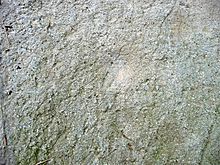|
|
|
|
PitglassieStone Circle
|
||||||||||||||||||||||||
|
|
|
Images (click to view fullsize) |
|









|
Fieldnotes |
|
|
All that is left is the recumbent and a flanker. Go up the Balloch Brae road from Turriff until the Auchterless/Fortrie crossroads. The site is about 1/4 mile up the Fortrie road being 50 meters into a field to the north. Stones rumoured to be from the circle can be found at Mid Pitgalssie. Visited repeatedly 2004-2009. |
7th April 2009ce Edited 13th July 2009ce |
Miscellaneous |
|
|
In Alistair Moffat's book "Before Scotland" Pitglassie, which means "patch of green" is a place of historical note. Page 118 ",early farmers worked a place called Pitglassie. The name translates as "patch of green land" and might remember a cleared area of woodland. Between 3750 and 3500 BC the farmers lifted the turf, cleared away the stones from a roughly circular area and built a funeral pyre in the middle. They buried the resulting cremations in the same place. This circular area was marked by a ring of 11 or 12 timber posts. A ring cairn was thrown around the site, probably making use of the cleared turf and stones. Pitglassie is significant because it prefigures the wood and stone circles of a later period, and may be the particular forerunner of the recumbent stone circles found in North Eastern Scotland." On Page 138 he continues concerning remains, bones etc. "What was done with the majority of the bodies? How were they disposed of? There is no evidence of mass graves, or indeed of anything else, and only speculation is possibe. It may well be that cremation of the sort that went on at Pitglassie provides an answer. Perhaps bones were defleshed and burned to dust, and that dust strewn over the ground that those people had farmed. And when it rained their remains went back into the land. This means of burial is undetectable." |
6th April 2009ce Edited 13th July 2009ce |
Links |
|
Alison ShepherdThe whole saga, for me, explained. This is wonderful stuff. |
7th April 2009ce |
Archaeology Data ServiceFrom the Proceedings of the Society of Antiquaries of Scotland, volume 9 (1870-72). "Notice of the Gallow Hill, Auchterless, and of Circular Foundations and Tumuli, and various Relics discovered there." by James Forrest. Gallows Hill is just south of Pitglassie stone circle. This article describes the wealth of prehistoric traces that was once there - hut circles, worked flints etc. The Gallow Hill long bore the character of a haunted place, especially on its southern side, where it slopes into the howe of the Auld Yoch. Many a time, it is said, has some belated wight had to encounter the ghosts of murdered men whose bones lay bleaching on the hillside; and often, too, has the passer-by heard the wailing of some infant crying "Nameless," " Nameless." But these superstitious fears, and even the traditions themselves, are fast disappearing. So much has the encroachment of human habitations upon, and the cultivation of, the hill destroyed all the ancient regard for it, that it would soon have been covered with cultivated fields, and all its antiquities would have passed away unnoticed, had it not been for the casual remark of a farmer who rents a portion of it... |
 Posted by Rhiannon
Posted by Rhiannon25th April 2008ce Edited 25th April 2008ce |
RCAHMSWhen last surveyed in 1973, all that remained was the recumbent, partly covered by the stones of the circle/field clearance piled on top. One of these stones is cup marked. |
 Posted by Chris
Posted by Chris21st September 2006ce |

